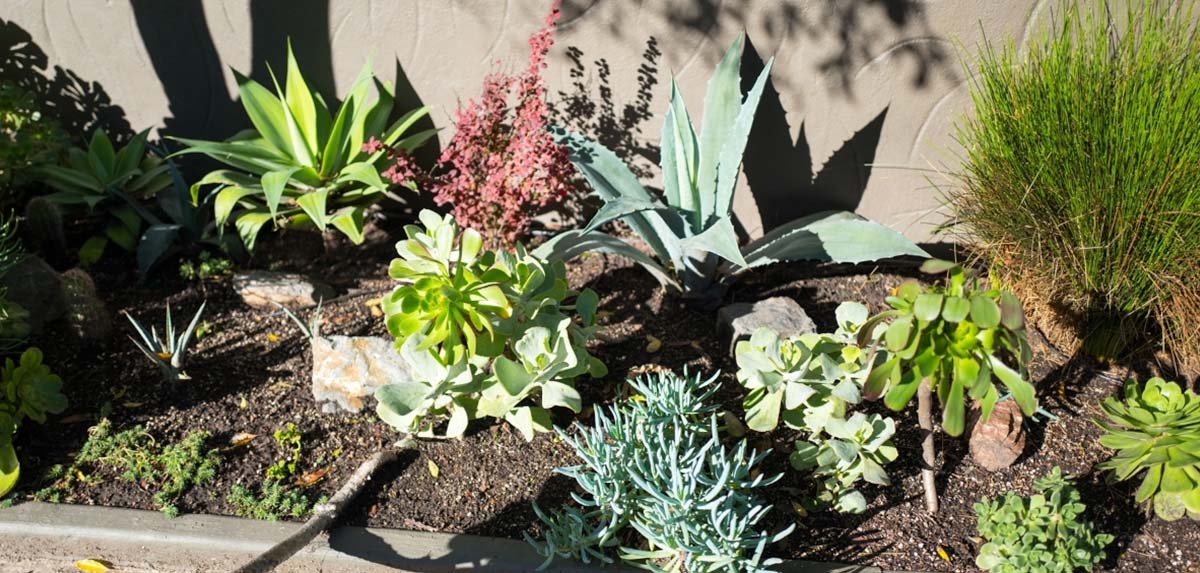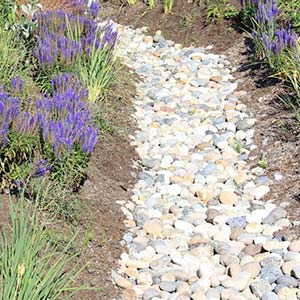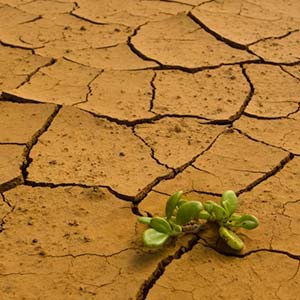512.291.0709
Mon - Fri: 9 AM - 11:30 AM
12:30 PM - 4 PM
February 23, 2021

There are several steps to take to protect your foundation, but the one we’re focusing on in this article is drainage – specifically, how you can improve your yard’s drainage with strategic landscaping.
Improper or insufficient drainage in your yard can lead to structural damage to your home’s foundation, which can create safety issues and the need for costly repairs. By proactively planning your landscaping, you can minimize drainage problems and protect your foundation.
When the soils around your home are not allowed to drain properly, the structure is likely to shift and settle, a natural occurrence that becomes much more pronounced when the expansive clay soil around the home is constantly expanding and contracting. This means that your foundation is experiencing excess stress that will lead to cracking, buckling and eventually, foundation failure.
A well-planned landscape design is one of the best ways to ensure that water is effectively drained away from the foundation. From proper grading to sufficient air circulation and choosing the best type of plants for water management, a great landscape design can make a significant difference in your property’s drainage and the longevity of your home’s foundation.
Austin’s expansive clay soils are uniquely problematic when it comes to maintaining a proper balance between too wet and too dry. Since the soil can’t be trusted to regulate itself, it’s often necessary to take a hands-on approach to ensuring proper soil density and moisture levels around the perimeter of your home. Many homeowners find that watering the soil during a dry spell can help maintain this balance, but you must be sure to avoid overwatering, as this could exacerbate the problem. Keeping planting areas mulched can also help maintain a proper moisture balance.
In some cases, drainage problems can be caused by improper grading, meaning that the home’s foundation isn’t elevated enough to allow water to drain away from the home (a proper grade is 6/10, or a six-inch decline in each span of 10 feet). If this is the case, it may be recommended that you have your property properly graded so that the ground slopes sufficiently to divert water away from the foundation. Additional recommendations include installing French drains strategically around the property to assist in diverting water away from the home.
Planting shrubs too close to the building can hinder air flow, causing the area to remain damp, which is NOT what you want for your foundation. To encourage ventilation, be sure to plant several inches away from the home and keep your shrubs trimmed away from the foundation. While you’re planning your landscaping, consider choosing drought-resistant plants near the perimeter of the home. They’ll pull in and use any extra moisture that would otherwise sit against the base of the foundation.
Gutters and downspouts are part of a system that is designed to carry stormwater runoff away from the home. If they’re old and worn, clogged or improperly cared for, however, they can actually add to the drainage problem. A leak in the gutter system can be repaired, and downspouts can be extended to properly carry the water away from the home. It’s important to ensure that you’re cleaning out your gutters at least twice per year to avoid clogging and overflow, and you should also make sure that the area that the downspouts are draining into is properly graded to continue carrying the water away from the home.
When choosing the types of plants, shrubs and trees that surround your home, it’s important to take into consideration the nature of each species’ root system. While smaller shrubs and trees can produce roots that help prevent soil erosion, larger trees typically have larger, wider, more invasive root systems, which can grow into your home’s foundation and destroy its structural integrity.
Low spots in your yard can be spotted by paying attention to where the water pools in certain areas after a rainshower. If your property has these low spots, it may be necessary for you to install an effective drainage system to allow water to properly drain away. Alternatively, or as a companion to another drainage system, raised flower beds can be created to help the water naturally flow down the slope around your home. Note: it’s important to design and build your flower beds with the grade of your property in mind to avoid making the problem worse.



If you determine that a French drain (or another type of drainage solution) is part of your remediation, you could consider using this system as part of a rainwater collection system, a rain garden or even a creek bed to channel excess water to a more suitable area.
If none of the aforementioned solutions provide a sufficient resolution to your drainage issues, you may need to look into a mechanical solution such as a sump pump or even a total foundation overhaul. In cases such as this, you should have a professional inspect the foundation to ascertain the problem as well as its causes and probable solutions. Don’t wait to address this problem – visible signs of damage are just the tip of the iceberg.
While Douglas Foundation Repair is not a landscaping company, our team are Austin’s top foundation repair experts, offering services that include concrete, steel and helical piers, soil stabilization, and slab foundation repair. Call us today to see how we can help you.
Schedule a Consultation